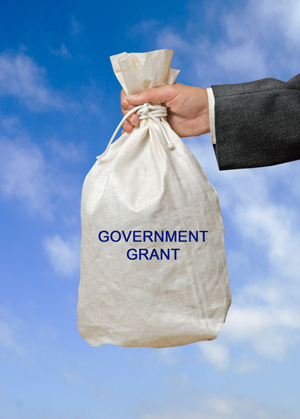4 Income from government

The second biggest source of funding for many voluntary organisations is from government although, as you saw earlier, some organisations such as Helen & Douglas House receive no income outside of donations. Income from government is either voluntary income (grants) or earned income (contracts or fees). Local government is the main provider of this funding but central government, the European Union and NHS trusts provide large sums too.
According to NCVO (2015), the voluntary sector received £13.3 billion in 2012/13, most of which was earned through contracts or fees. The NCVO data show that more than a third of the funding for major organisations comes from government, whereas for micro and small organisations, it is 16%. The reasons why the smallest organisations have less government funding are two-fold: first, small organisations may not actually need government funding if they are operating in fields that are more locally or hobby-based; second, micro and small organisations may not have the resources or knowledge required to take part in lengthy and complex negotiations and writing applications.
At the time of writing in 2015, a key feature of UK government funding is that it is on the decline: since 2009/10 income has fallen every year and this is in line with government cuts across public spending. This is likely to continue to do so. Furthermore, there is an increasing shift from grants to contracts, making funding more restricted.
The differences between grants and contracts
A
A
Activity 5 Grants versus contracts
Think about the following questions and make some notes:
- What do you think are the advantages and disadvantages of grants and contracts?
- What would be your preference if you were involved with fundraising in a voluntary organisation?
Comment
The advantage of grants and contracts at a simplistic level is that they both provide funding, which is what organisations need to function.
The disadvantages common to both are the amount of work involved in writing applications for grants or tenders for contracts.
The main advantage of a grant over a contract is that the organisation decides what to apply for and how it will use the money. Some grants will be monitored and evaluated, so they are not effort-free once awarded.
One advantage of a contract is that it may enable an organisation to provide a vital service. However, contracts do involve a considerable amount of work through the tendering process and the organisation has to ensure it is able to deliver according to the tightly specified terms of the contract. A disadvantage is that when the contract comes to an end, an organisation may have to end the service and possibly make staff redundant or transfer them to the new contract holder.
Therefore, if you were involved in fundraising, you would need to think carefully about the advantages and disadvantages created by these types of funding. The context is also important: one type might be more common or appropriate in your organisation and, of course, it depends what your organisation needs the money for – for example, a one-off project or something it wants to run long term.
One concern for voluntary organisations is that a heavy reliance on government contracts or other major funders might compromise the organisation’s independence and its ability to campaign. The Panel on the Independence of the Voluntary Sector (n.d.) was established in 2011 (with a particular focus on England) to investigate concerns about independence. It has published various reports exploring risks and challenges to the voluntary sector.
